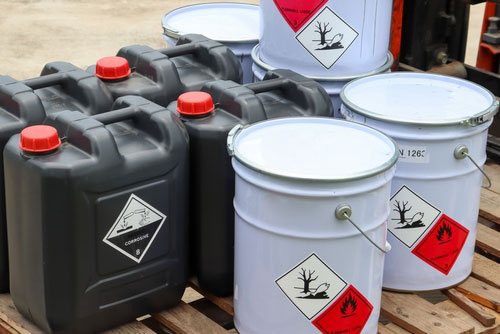Written by Occupli Safety Consultant Jake Bumpus
According to the Institution of Chemical Engineers (IChemE), a Hazard and Operability (HAZOP) Study is “a detailed method for systematic examination of a well-defined process or operation, either planned or existing.” Commonly accredited to Trevor Kletz while working as a Safety Manager at ICI, it is now a widely used Process Hazard Analysis (PHA) methodology across the process and chemical industries.
In order to undertake a HAZOP, a process or system is broken down into suitable sections, generally referred to as Nodes. An agreed list of Parameters (e.g. Flow, Temperature, Pressure etc.) and Guidewords (e.g No/None, Less, More etc.) are combined and systematically applied to each node, to identify potential Deviations (such as No Flow, More Pressure). For each credible Deviation, the potential causes, consequences, and risk are assessed, and the current controls which are in place are evaluated. If further controls are required, then actions are raised to reduce the risk to an acceptable level.
HAZOP Studies are always carried out by a team of people. A HAZOP Team generally has a chairperson/study leader to guide the discussions, a secretary/scribe to formally record the discussions, as well as number of team members such as engineers, managers, operators, safety representatives and other specialists. As they are a team-based activity, they allow different stakeholders to interact and discuss the process, and the HAZOP Study is often the first place where they have the opportunity to do this in detail, face-to-face. Although very structured, it can also be a creative process, allowing hazards to be identified which would have otherwise not been thought about.
There a number of common pitfalls associated with HAZOP Studies, which require the advice of experienced and competent HAZOP chairs and team members to avoid:
- Ensuring that the documents which underpin the study are of good quality and have the necessary level of information. If too much information is missing or incorrect, then the HAZOP cannot be effective.
- Carrying out the HAZOP at the right stage of the design/modification project – too early and not enough information is available for a good quality HAZOP, too late and there will not be enough time to easily implement recommendations for improvement.
- Selection of the HAZOP team – the competence of the team members is important for a good quality HAZOP, as well as the size of the study team. If too small, hazards might be missed due to a lack of expertise; if too large, the HAZOP may become excessively long and costly.
Occupli Consultancy process safety consultants carry out the full HAZOP Process for our clients. Occupli Consultancy;
- deliver Process experts to attend the Hazop meetings
- provide a chair for the Hazop meetings
- provide a scribe for the Hazop
- provide a detailed systematic process and associated procedures and documentation/checklists, etc
- provide a high degree of practicality and quality to the hazard identification, risk assessment and control process.
- apply the ALARP principle in identifying the appropriate control measures and design changes
- look closely at the full life cycle covering construction phase, validation phase, commissioning phase, operational phase, maintenance activities, foreseeable demolition situations, etc
Similar Topics:
- Did you know that Occupli Consultancy also offer Safety Audits? Click here for more information
- Did you know that Occupli Consultancy also offer Risk assessments? Click here for more information
- Did you know that Occupli Consultancy also offer Safety Auditing Services? Click here for more information
- Occupli Consultancy also offer Machinery Safety Consultancy – Click here for more information

